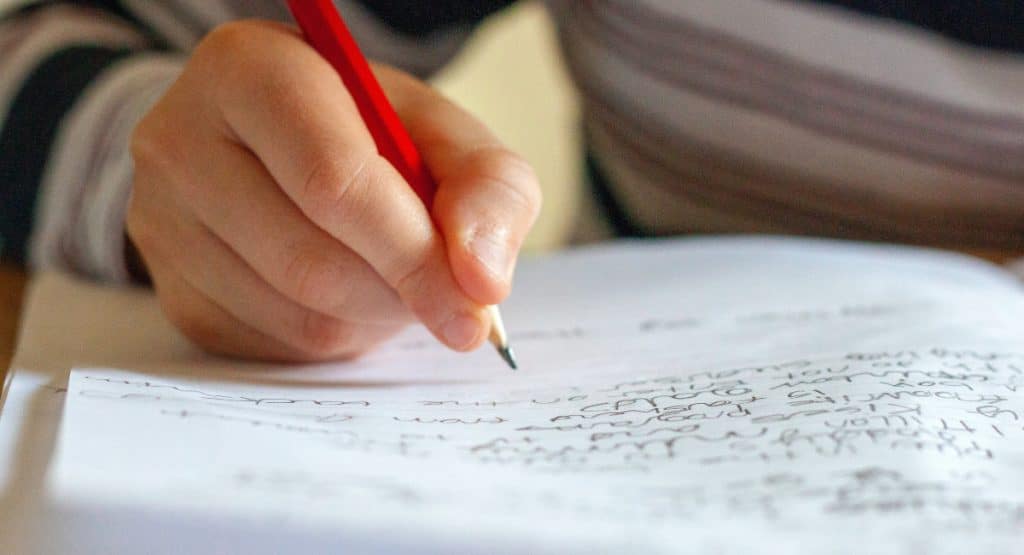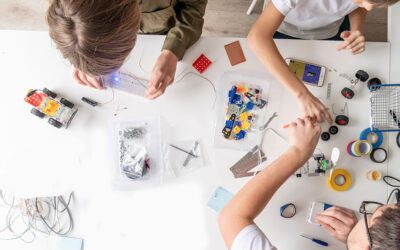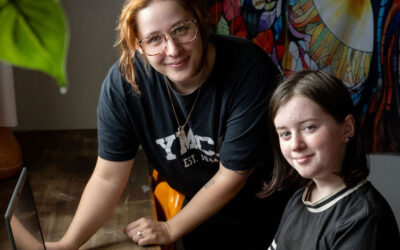Pencil grip is just one element of handwriting. By the time your child reaches preschool or Prep, they have developed a pencil grip that is most comfortable for them. However, handwriting is dependent on how a child holds their pencil and if they aren’t holding it in a proper way it can affect their academic growth in school.
A child’s pencil grip can be an issue if their writing cannot be easily read, if they are unable to write at reasonable speed, or if they complain about their hands being sore or tired when writing. A poor grip can be more easily corrected in a child’s early education.
What’s an acceptable pencil grip
Parents and carers should encourage their children to grasp a pencil in a way that allows the child’s hand and fingers to move freely and easily when writing or drawing. Generally, the guidelines for a good pencil grip include:
- holding the pencil in a stable position between the thumb, index and middle fingers
- having the ring and little fingers bent and resting comfortably on the table
- allowing the index and thumb to form an open space
- having the wrist bent back slightly, with the forearm resting on the table
- holding the pencil no more than 2cm from the tip.
You can help your child with their grip by showing them the correct finger and thumb positioning. Over time they will learn how to correctly and consistently hold the grip if they practise for a few minutes each day.
Fun and interesting activities like writing and drawing can also help your child’s pencil grip.

Fun activities to develop pencil grip
Providing your child with a range of pencils, felt pens, crayons and chalk, and using an array of coloured and different sized paper and cardboard can help develop your child’s pencil grip. Dot-to-dot books, stencils and tracing, card making, using a magnetic drawing board, building with blocks and even playing noughts and crosses are other easy ways.
Pencil grip can also be improved with fine motor play. You can use simple household items to help your child develop their grip. We’ve found five practical (and fun) things you can do with your child.
Use elastic/rubber bands
One method is to start by placing the band around the pencil. Then twist the band and form a hole. Place the child’s writing hand through the hole to where the band is wrapped around their wrist and the pencil. Voila, the band becomes a writing aid and promotes good pencil grip. A second method is to get your child doing finger gymnastics. Get two bands of the same size and wrap them around your child’s thumb, index finger and middle finger. Add extra bands so that it becomes increasingly difficult for your child to move their finger. This exercise helps muscle development.
Use beads
Beads are great for developing hand-eye coordination in children, but they’re also a good way of encouraging an open web space. Children must hold the bead and string between their thumb and index fingers. When a child has a weakness, the thumb web space will collapse. By using different sized beads and threads, you are making the activity challenging, and because beading is repetitive it promotes strength.
Use tissue paper
Using tissue paper in art projects is an excellent way to develop your child’s hand strength. If your child complains of sore or tired hands when they write or colour, they are lacking strength in their hands. Get your child to crumble bits of tissue paper using just their finger tips. Go further and as them to tear the bits of paper before they crumble it into a ball. These activities are perfect for strengthening the hands smaller muscles.
Get lacing
The most efficient way to hold a pencil when writing is the tripod grip (outlined above). However, children new to pencils or crayons can have a range of different and unusual grips. If your child is holding their pencil in a way that doesn’t give them much control then they need to do some lacing activities. Lacing cards are great, but if you don’t have them, get your child to thread the laces of your shoes. To be successful at lacing, children must hold the string in a tripod grip in order to push it through the holes.
Set up an easel and get painting
Painting, drawing, colouring or writing on an elevated surface can assist children who need to develop their extended wrist. This is where the wrist is slightly bent back, which promotes better movement and flow of the fingers when forming letters. You could also get your child to peel stickers and place them on a piece of paper (kids love stickers), which not only helps the wrist but promotes hand-eye coordination.
When to seek further help
Pencil grip activities are fun ways of helping your child develop their skills. Most children develop their pencil grip skills between the ages of three and six. If you have concerns about your child’s pencil grip, you should seek further help from your GP or an occupational therapist.
Important Legal Information
This article is of a general nature and FYI only. It is not personalised health or education advice and should not be relied upon as though it is. Before making a health-related or education-related decision, you should determine if the information is appropriate for your situation and get professional advice.
Spanning Brisbane, Gold Coast, Sunshine Coast and beyond, Kids on the Coast is an online guide and printed free magazine for parents. With kids events and activities, attractions & things to do with kids, schools and education, school holiday guides, health & wellbeing for families, parenting and lifestyle news. Located on Gold Coast, Sunshine Coast & Brisbane, QLD.


